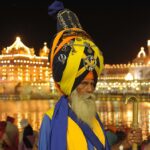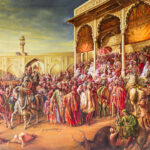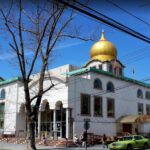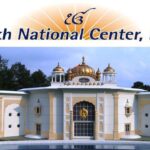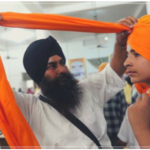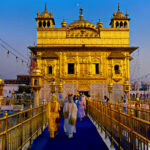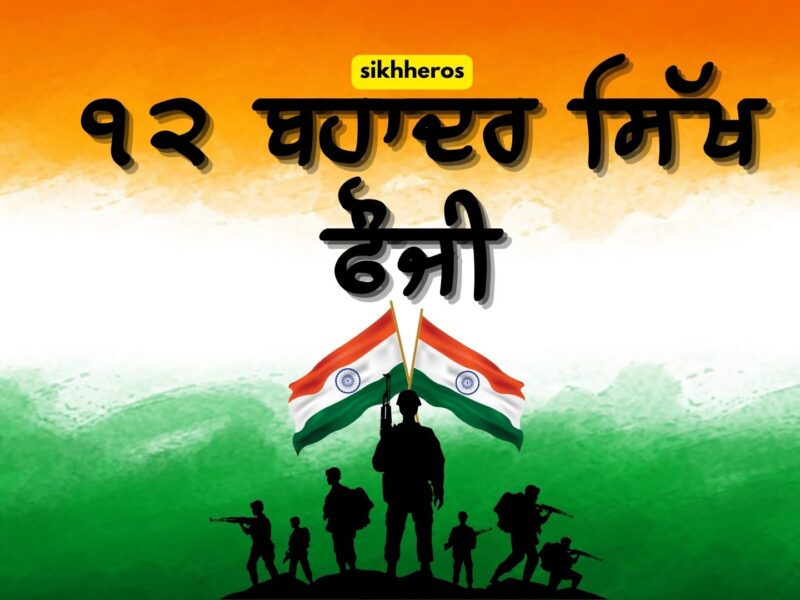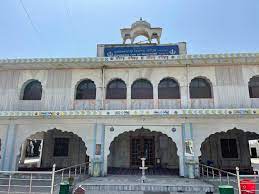MOVEMENT OF NAMDHARI
Ram Singh established the Namdhari organization to promote freedom for the entire country of India by opposing the occasionally repressive British presence and forces in India. Ram Singh’s commitment to this cause originated from witnessing Punjab’s devastation after the British annexed it from 1849 to 1853. Ram Singh convened a gathering in his hamlet in the Ludhiana district before the First Indian War for Independence started in 1857. Ram Singh’s moral and religious lecture was particularly notable because of the crowd, not so much because of his words.
Consisting of local villagers comprising of individuals from diverse castes, those from all different career positions, and even the so-called “untouchables,” Ram Singh realized the power that these groups had in the Indian movement for freedom. There were other instances where the Namdhari’s positions as patriotic freedom fighters predominated after their responsibilities had been established. A few people and events proved to be crucial in the liberation fight from 1857 to 1947. Ram Singh and eleven of his supporters, for instance, were detained in January 1872 as a result of their promotion of anti-British sentiment. On suspicion of serving as Russian spies, several Namdharis, including Baba Gurcharan Singh, were also detained. These unjustified detentions of the Namdharis were prevalent, and regrettably, some of these heroes even perished as a result.
MOVEMENT OF SINGH SABH
The efforts of the Namdharis, which had caused the British to become frustrated and angry, led to the creation of the Singh Sabha Movement. Through the creation of the Singh Sabha Movement, the British wanted to combat the nationalism demonstrated by the Namdhari movement. The Brits attempted to thwart the Namdhari’s efforts by launching the Singh Sabha Movement. The main distinction between the two movements was the Namdhari’s conviction that Guru Gobind Singh Ji, the last Sikh Guru, did not die at Nanded but rather transferred the guruship to a man by the name of Guru Balak Singh. The Sri Guru Granth Sahib Ji, on the other hand, is the sacred book that the Singh Sabhas advocate as proof that the Guru did die and transfer the Guruship to him. Yet, there were two distinct factions even within the Singh Sabha. The Sanatan Sikhs, on the other hand, supported the ancient teachings of the Sikh Gurus, particularly in acknowledging a casteless society and acknowledging that Sikhs also belonged to the Hindu framework. Such original Sikh ideas were promoted by the Sanatans through preaching, instruction, social change, and even writing. The Tat Khalsa was the second group opposed to the Sanatans; they tried to distance Sikhism from its ties to Hinduism by emphasizing that the authentic Sikh was a member of the khalsa. Both the Sanatans and the Tat Khalsa factions of the Singh Sabha Movement advocated for positive social change in Punjab, including the encouragement of education as well as financial support for these schools, the improvement of the economy through effective communication, and the extension of the canal system.
AGENCY FOR REFORM IN GURDWARA
The desire for Sikh traditions and principles to be upheld and resurrected led to the formation of the Gurdwara Reform Movement. The Gurdwara Reform Movement specifically reacted to the power of the “Mahants,” or professional priests who belonged to the Udasi sect, in all Sikh gurdwaras, which was brought on by the efforts of the Singh Sabha Movement as well. The movement demanded the removal of these priests from all Sikh temples since it was thought that the Mahants were taking the donations and money given to the gurdwaras for their private use. Despite initially favoring the Mahant priests, the British eventually changed their minds and in 1922 passed the “Sikh Gurdwaras and Shrines Act” in response to pressure from the Sikh community. The Act specified that the British government would appoint a committee to manage all issues relating to the gurdwaras in India. The Akali chiefs opposed the first draught of the bill because the British chose to control the committee. As a result, a second draft of the legislation was created that increased the jurisdiction of the Akali council members. The Act generally insured that all Sikh gurdwaras would be improved through effective control and leadership.
MOVEMENT BY JAITO MORCHA
The Jaito Morcha movement refers to the protests of Sikhs against the British government’s forced abdication of Maharaja Ripudaman Singh, who ruled the princely state of Nabha from 1912 to 1923. The British ordered Ripudaman Singh to abdicate in favor of his infant son Pratap Singh because he was an Akali supporter and sympathetic to the nationalist activities on behalf of Indians. The police intervened and made arrests when a group of Sikhs gathered to protest and try to have Ripudaman Singh reinstated. On February 9, 1924, 500 Akali Sikhs started a nonviolent march to protest the Maharaja’s abdication, but things quickly turned violent. The British governor Wilson Johnston stopped the Akali Sikhs after they had marched more than 10 kilometers to the Gurdwara Tibbi Sahib. Johnston gave the order for his soldiers to start firing when the Sikhs continued towards the Sikh temple Tibbi Sahib without stopping. 19 Akali Sikhs died as a result of this horrible act, and 29 others were hurt.

